NAUTILUS SHELLS
Nautilus Shells
The Nautilus genus, a marine cephalopod within the Nautilidae mollusk family, exhibits significant morphological differences from the two species classified under the closely related sister-taxon Allonautilus.
A cephalopod is a member of the molluscan class Cephalopoda, which includes species such as squids, octopuses, cuttlefish, and nautiluses. These marine animals are distinguished by their bilateral body symmetry, distinct heads, and a series of arms or tentacles, which are muscular hydrostats evolved from the primitive molluscan foot. Fishermen often refer to cephalopods as "inkfish," alluding to their shared trait of ejecting ink. This ink typically appears as a dark patch on the shell.
The classification of species within the genus Nautilus has been a subject of debate for decades, leading to multiple reconfigurations and redefinitions over time. Nautilus, the type genus of the Nautilidae family, was initially defined as any species with a coiled shell and simple sutures—walls between shell compartments. Species with complex sutures were categorized under the genus Ammonites. This classification stood for nearly two centuries, from the genus's establishment in 1758 by Carl Linnaeus until 1949. That year, paleobiologist Arthur K. Miller provided a comprehensive description of the N. pompilius shell, designating it as the type species for the genus. In 1951, Miller proposed that only living Nautilus species should be included in the genus, a significant shift from the previous inclusion of numerous fossil species.
Species of the genus Nautilus are found in the Indo-Pacific, particularly in the tropical waters of this region, though their full geographic range remains undocumented. The depth of water significantly limits the movement of Nautilus species. They struggle to traverse areas deeper than 27 feet, with most of their activity taking place between 330 and 985 feet deep. Occasionally, Nautilus may be spotted shallower than 328 feet, but the shallowest depth they inhabit is influenced by factors like water temperature and seasonality. All species of Nautilus are considered likely endangered, as evidenced by the overfishing of Nautilus Pompilius in the Philippines, leading to an 80% population reduction from 1980 to 2010.
Nautiluses have been observed spending days in the deeper regions around coral reefs to evade predators such as turtles and carnivorous fish, and they ascend to the reef's shallow areas at night. In these shallower waters, they scavenge for animal remains and crustacean molts. Typically, nautiluses are solitary in their travels and feeding habits. After daybreak, they return to the depths where they also lay their eggs, which take about a year to hatch. This behavioral pattern may have contributed to their survival during the Cretaceous-Paleogene extinction event, which rendered shallow oceanic areas uninhabitable. Nautiluses are known to inhabit a wide range of depths, up to approximately 1640 feet, but are at risk of implosion if they exceed their depth and pressure thresholds. The shells of living nautiluses can collapse at depths exceeding 2460 feet, depending on the species.
The feeding behavior of the genus has been determined through observations of captive individuals and analysis of the stomach contents of wild specimens. Nautilus are opportunistic feeders, consuming a variety of crustaceans, including their sheds, and fish, but they have also been known to eat chicken and bat bait. While Nautilus were once believed to be active predators of certain prey, this behavior has only been documented in traps, where prey is confined close to the Nautilus. They locate food using their tentacles, which possess chemosensory abilities, and their vision. Nautilus engage in regular vertical migrations, rising to shallow reef areas between 328 and 492 feet deep at night to feed, then descending to depths of 820 to 1148 feet during the day, although these depths can vary with local geography. Nautilus can ascend at roughly 7 feet per minute and descend at about 10 feet per minute.
Numerous species are known to prey on the Nautilus. Octopuses, for instance, have been identified as predators, especially after an event where an octopus was found having partially eaten a Nautilus in a trap. Moreover, many drift shells show small holes that correspond to the marks left by octopuses drilling into the shell to feed. Teleost fish, like triggerfish, are also known to consume Nautilus by forcefully ramming them to fracture their shells. When faced with predator attacks, Nautilus retreat into their shells for protection.
It is possible to keep Nautilus in aquaria, however, specific care is necessary in order to ensure their survival in captivity. The survival rate of Nautilus in captivity is relatively poor, primarily due to the stress that individuals are subjected to during transportation. As many as 50-80% of Nautilus die during transportation, and this percentage can be higher if individuals are exposed to high temperatures. In captivity, Nautilus are generally fed a diet of whole shrimp, fish, crab, and lobster moults. Several aquaria around the world host specimens of the genus, however, there have not yet been any successful attempts of breeding in captivity, despite viable eggs being produced at several locations. Two Nautilus eggs were hatched at Waikiki Aquarium, however, these individuals both died months later.
The majority of our knowledge about Nautilus reproduction is derived from captive individuals in aquariums. These observations suggest that Nautiluses lack a complex courtship ritual. Males are known to attempt mating with any object resembling another Nautilus in size and shape. Upon locating a female, the male engages in the mating process and may remain attached to the female for a duration varying from several minutes to hours.
Nautilus eggs are deposited in capsules that are typically 1 to 2 inches in length and gradually harden upon exposure to seawater. The exact method by which juveniles escape these capsules is not fully understood, but it is speculated that they may chew their way out using their beaks. The genus displays a sex ratio heavily skewed towards males, a pattern observed in various global locations, with some populations comprising up to 95% males. The cause of this imbalance remains a mystery.
The male nautilus possesses a reproductive organ called Van der Hoeven's organ. The female nautilus has two reproductive organs, the functions of which are not yet understood: the Organ of Valenciennes and Owen's laminated organ.
All nautilus species are threatened by overfishing for their shells, commonly used in jewelry and decorative crafts. In 2016, they were included in CITES Appendix II to restrict international trade, and the chambered nautilus was subsequently designated as a threatened species under the Endangered Species Act. Consequently, commercial harvesting of these species is prohibited. We possess a finite inventory acquired prior to their endangered classification. Availability following the sale of this stock is unpredictable.
Scientific classification
Domain: Eukaryota
Kingdom: Animalia
Phylum: Mollusca
Class: Cephalopoda
Subclass: Nautiloidea
Order: Nautilida
Family: Nautilidae
Genus: Nautilus
Linnaeus, 1758
(REF: "Checklist of CITES species".)(REF: Ward, Peter; Dooley, Frederick; Barord, Gregory Jeff (2016-02-29). "Nautilus: biology, systematics, and paleobiology as viewed from 2015". Swiss Journal of Palaeontology. 135)(REF: Goedert, James L.; Kiel, Steffen; Tsai, Cheng-Hsiu (2022). "Miocene Nautilus (Mollusca, Cephalopoda) from Taiwan, and a review of the Indo-Pacific fossil record of Nautilus)(REF:Gregory J. Barord, David J. Combosch, Gonzalo Giribet, Neil Landman, Sarah Lemer, Job Veloso et Peter D. Ward, « Three new species of Nautilus Linnaeus, 1758 (Mollusca, Cephalopoda) from the Coral Sea and South Pacific)(REF:Griffin, Lawrence E. (October 1897). "Notes on the Anatomy of Nautilus Pompilius". Zoological Bulletin. 1)(REF: Wray, Charles G.; Landman, Neil H.; Saunders, W. Bruce; Bonacum, James (1995). "Genetic divergence and geographic diversification in Nautilus". Paleobiology. 21)(reF: Barber, V. C.; Wright, D. E. (1969). "The fine structure of the sense organs of the cephalopod mollusc Nautilus". Zeitschrift für Zellforschung und Mikroskopische Anatomie. 102 )(REF: Dunstan, A.; Alanis, O.; Marshall, J. (November 2010). "Nautilus pompilius fishing and population decline in the Philippines: A comparison with an unexploited Australian Nautilus population". Fisheries Research. 106)(REF:Landman, Neil H.; Cochran, J. Kirk; Rye, Danny M.; Tanabe, Kazushige; Arnold, John M. (1994). "Early life history of Nautilus: evidence from isotopic analyses of aquarium-reared specimens". Paleobiology. 20 )(REF: Arthur Willey (1902). Zoological Results Based on Material from New Britain, New Guinea, Loyalty Islands and Elsewhere: The anatomy and development of Peripatus novae-britanniae. University Press. pp. 778–9.)
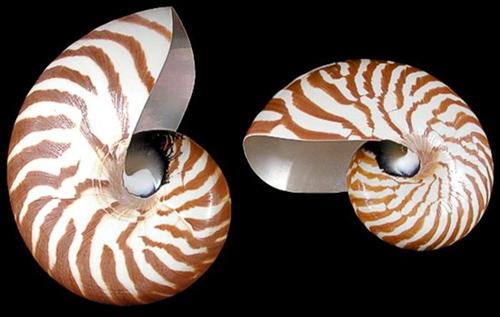
Whole Natural/Tiger Nautilus Shells
Our Nautilus shells are in their natural condition. We carefully inspect shells to make sure they are not broken prior to SHIPMENT. These are high quality shells
F5-5
A whole Tiger Nautilus shell, measuring at least five inches.......OUT OF STOCK
F6-5
A whole Tiger Nautilus shell, measuring at least 6 inches.. ......$125
F7-5
A complete Nautilus shell, measuring at least 7 inches......$135
Contact shells-of-aquarius by email at ja1@mindspring.com
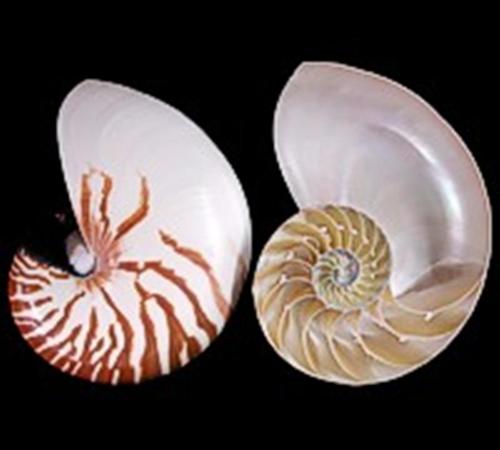
TIGER NAUTILUS CENTER CUT WITH TWO MATCHING PARTS
TIGER NAUTILUS CENTER CUT WITH TWO MATCHING PARTS
Tiger Nautilus Center Cut
TIGER NAUTILUS SHELL 3 SECTION CUT MATCHING SET
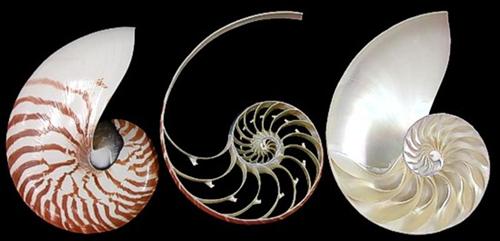
THREE SECTION TIGER NAUTILUS SHELL MATCHING SET
WHOLE PEARL NAUTILUS SHELL
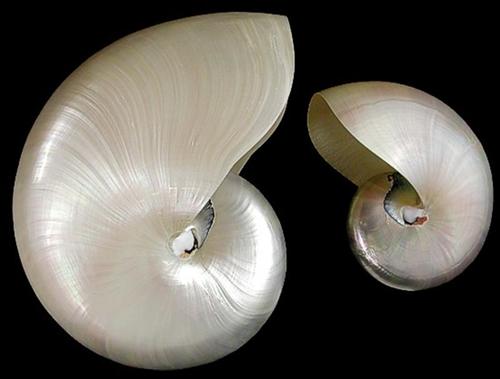
Pearl Nautilus shell
WHOLE PEARL NAUTILUS
D2-5
One whole Pearl Nautilus shell, measuring at least 2 inches in size........ $25
D3-5
One Whole Pearl Nautilus, measuring at least 3 inches....... $35
D7-5
A single, whole Pearl Nautilus shell, measuring at least 7 inches...... $135
D5-5
A complete Pearl Nautilus shell, measuring at least 5 inches....... $110
D6-5
A complete Pearl Nautilus shell, measuring at least 6 inches........$125
PEARL NAUTILUS SHELL CUT INTO TWO MATCHING SECTIONS
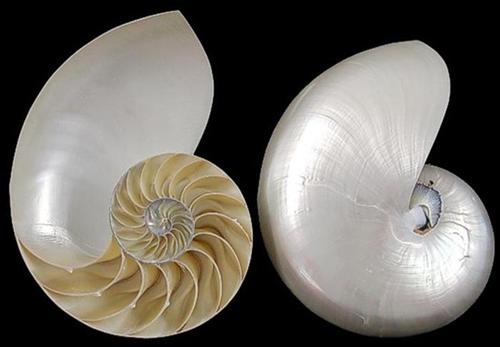
PEARL NAUTILUS SHELL CENTER CUT
PEARL NAUTILUS SHELL 3 SECTION CUT MATCHING SET
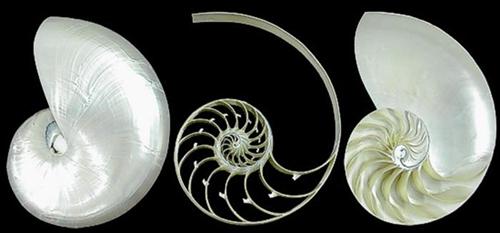
PEARL NAUTILUS 3 SECTION CUT MATCHING SET
O4-6
A Pearl Nautilus shell, measuring at least 4 inches, sectioned into three parts....... $45